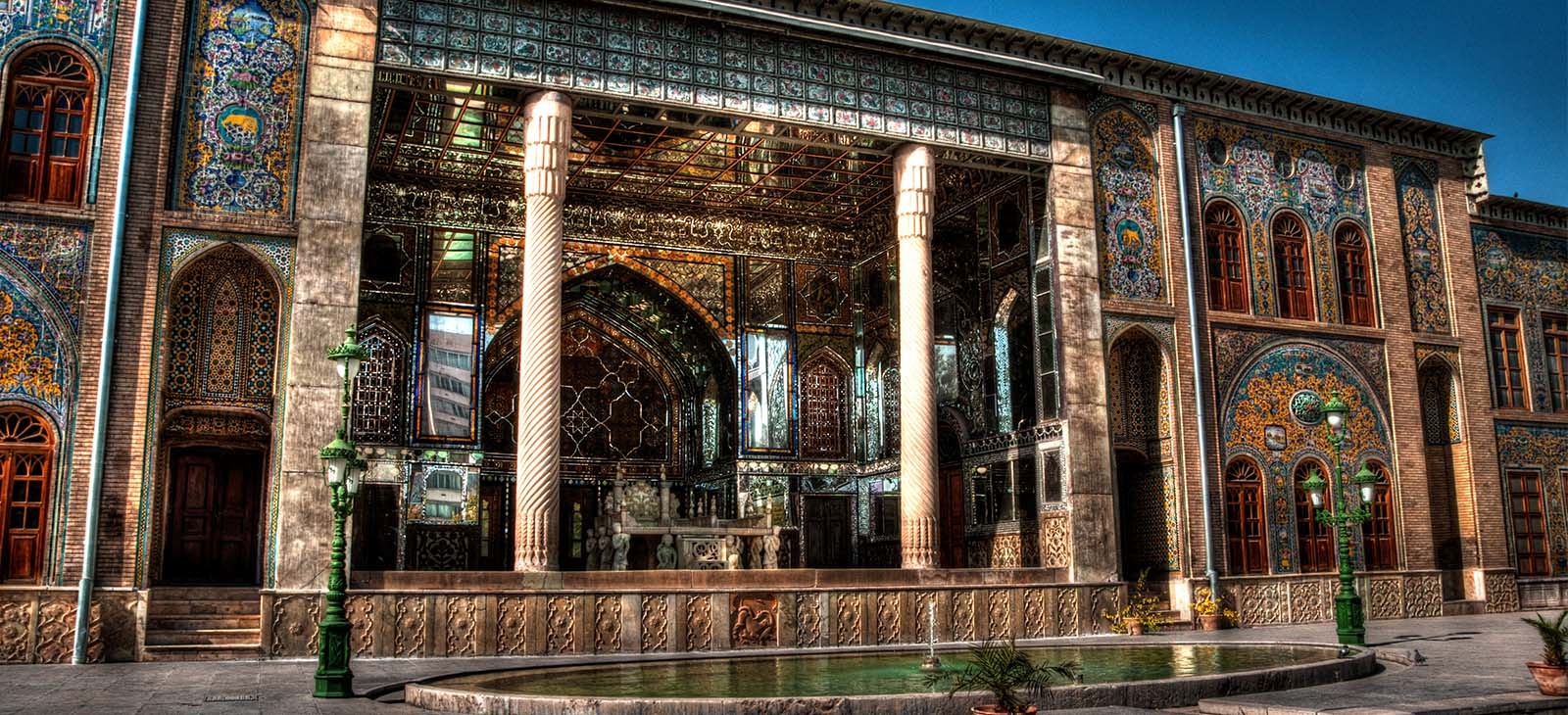The Golestan Palace, also spelled Gulistan Palace, literally the Roseland Palace, is the former royal Qajarcomplex in Iran's capital city, Tehran. The oldest of the historic monuments in Tehran, a world heritage, the Golestan Palace belongs to a group of royal buildings that were once enclosed within the mud-thatched walls of Tehran’s Historic Arg (citadel).
The Tehran’s Historic Arg was built during the reign of Tahmasp I (r. 1524-1576) of the Safavid dynasty (1502–1736), and was later renovated by Karim Khan of Zand (r. 1750-1779). Agha Mohammad Khan of Qajar (1742–1797) chose Tehran as his capital. The Arg became the site of the Qajar (1794–1925). The Court and the Golestan Palace became the official residence of the royal Qajar family. The palace was rebuilt to its current form in 1865 by Haji Ab ol Hasan Mimar Navai.
During the Pahlavi era (1925–1979), the Golestan Palace was used for formal royal receptions, and the Pahlavi dynasty built their own palace at Niavaran (Niavaran Palace Complex). The most important ceremonies, held in the palace during the Pahlavi era, were the coronation of Reza Khan (r. 1925-1941) in the Marble Throne (Takht e Marmar) and the coronation of Mohammad Reza Pahlavi (r. 1941-deposed 1979) in the Museum Hall.
In between 1925 and 1945, a large portion of the buildings of the palace were destroyed on the orders of Reza Shah. He believed that the centuries old Qajar palace should not hinder the growth of a modern city. In the place of the old buildings, commercial buildings with the modern style of 1950s and 1960s were erected.
Golestān Museum is divided to seven parts:
1- Anthropology Museum
2- Diamond Building
3- Akskhāneh (House of Photography)
4- Howzkhāneh (House of Piscine)
5- Negārkhāneh (Picture-Gallery)
6- Shams-ul-Emāreh Building.
7- Marble Throne Verdana and Gushvāreh rooms
A list of ancient masterpieces, shown in this Museum, are: Guiveh, Pottery, Stone works, Metal works, Felt, Calico, Bride Models, Marriage Papers, Stationary, Music Instruments, Ghaveh-Khaneh (Coffee House) Models, Slipper and Stocks, Weapons, Travel Necessities, Ashura Hall, Passion-Play Accessories, Duskami (big glasses for wine), Nakhl and Korsi. A big library is completed this Palace and Museums. Ancient Building of this Museum, were the Palace of Kings, in Past. For some people visit Buildings is more interested than Museums.
Golestān Palace complex is all that remains of Tehran's Historical Citadel (Arg) which once glittered like a jewel. This historical Arg was built at the of Shah Tahmasb I in Safavid period. It was reconstructed at the time of Karim Khan Zand and was chosen as the venue of the royal court and residence at the time of Qājār Kings. Nasser ad-Dīn Shah introduced many modifications in Golestān Palace buildings during his reign. Construction started in 1865 and was completed in two years. Building was designed by Moayer-ul-Mamālek and its architect was Ostad Mohammad Ali of Kashan. Its balanced design, set off by two towers, is typical of Persian Architecture as is the multiple display of arches, tile work and Ornate windows.

